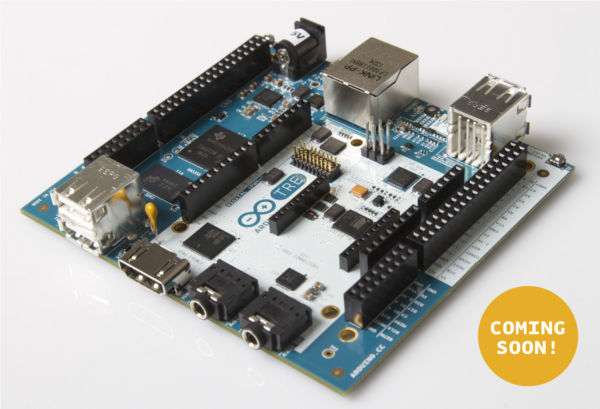Biggest difference IMHO: Tre hasn't been released yet!
Besides that, there are a few different things that you should compare. Not much is available about the Tre as of now, but I'll update this post when it's released.
Basic Specs: [First sub-bullet is TRE, second Galileo; better spec in bold]
- Microcontroller:
- Texas Instrument Sitara AM3359AZCZ100 (ARM Cortex-A8) (1 GHz, 32 bit), Atmel ATmega32u4 (16 MHz, Secondary, found on Leonardo)
- Intel® Quark SoC X1000 (400 MHz, 32 bit)
- RAM:
- 512 MB SRAM (2.5 KB ATmega32u4)
- 512 MB SRAM
- Pins
- 14 Digital 5V, 7 of which are PWM, 6 analog 5V (additional 6 multiplexed) (32u4); 12 Digital 3.3V, 4 of those are PWM (Sitara)
- 14 5V digital, 6 of those are PWM, 6 analog 5V
- Networking:
- Ethernet 10/100
- Ethernet 10/100
- USB port:
- 1 USB as slave, 4 USB host ports
- Up to 128 devices as host, 1 USB slave
- Video
- HDMI (1920x1080), LCD header
- None that I can find
- Audio
- HDMI, stereo analog audio input and output
- None that I can find
- MicroSD card
- PCIe Slot
Sources (I combined a bunch of data for this): Galileo & Tre
Conclusion: If you need a board before the Tre comes out, which seems to be soon (Spring 2014), Galileo is your only option. Other than that, the Tre seems to be better all around in most aspects, minus the PCIe slot. I can't comment on power, but it seems like the Tre will be able to supply 4x the power per pin than the Galileo. The Galileo is getting older, and it doesn't seem like the Galileo can provide full Linux support like the Tre will.
Personally, I'd wait for the Tre. The only thing I can think that the Galileo would be better for would be either a.) lower power usage or b.) the PCIe slot for a WiFi adapter that works decently. The second one could be solved by doing a common WiFi router hack.
If you need a lot of processing power without the need of low latency, you should conciser sending data to a computer to process.

Source

Source


